You have a very wide window to cover for a project. Off-the-shelf blinds aren't an option, and you're worried that putting two blinds side-by-side will look unprofessional and leave a huge gap.
Yes, you can join two roller blinds1 using special linking brackets2 that allow both blinds to be controlled by a single chain or motor. This method minimizes the gap between fabrics for a more seamless appearance3 than simply mounting two separate blinds next to each other.
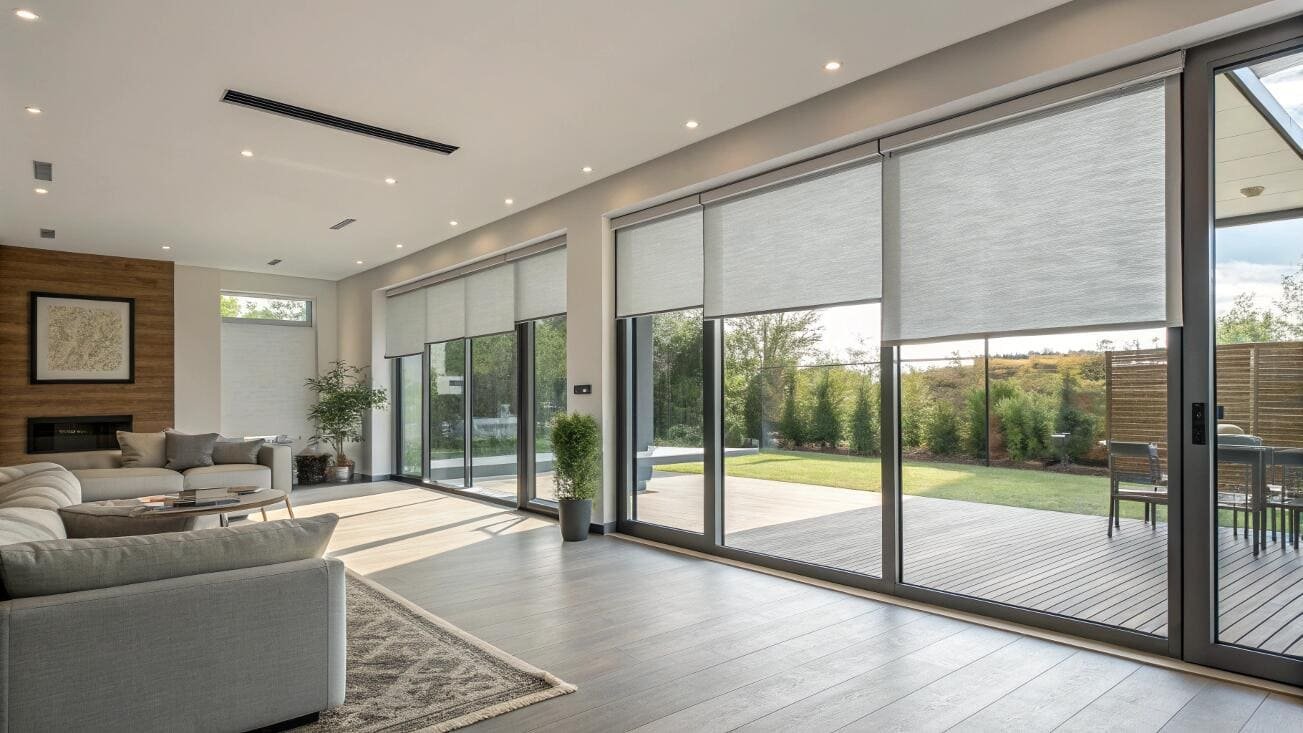
Explore our full range of 👉 Roller Shades
I see this challenge on projects all the time, especially in modern homes and commercial spaces with large glass facades. While it's certainly possible to join roller blinds with DIY methods, the most seamless and durable solution is choosing a custom-made wide blind4 or a dual system that is designed from the start to fit the space perfectly without any gaps. It's about getting that clean, architectural finish your clients expect.
How Do You Connect Two Blinds and Manage the Gap?
You're trying to join two blinds, but the gap in the middle seems unavoidable. How do you physically connect them, and what's the best way to get them to overlap for better coverage?
To connect two blinds, you use a central linking bracket that supports both tubes. To minimize the gap, you can reverse-roll one of the blinds so the fabrics can hang closer together or even slightly overlap, providing better light control and a more cohesive look.
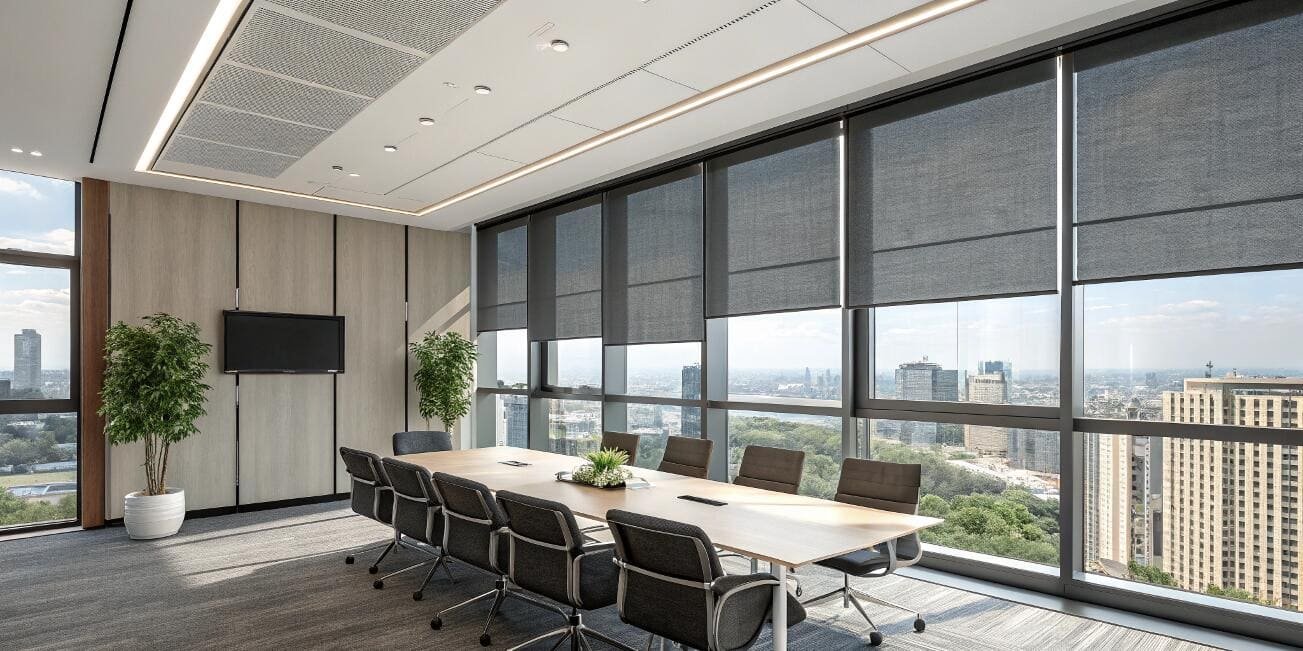
Achieving a clean look is all in the details of the hardware and installation. Simply putting two standard blinds next to each other will leave a significant gap due to the space needed for the brackets and controls on each side. A professional system solves this.
Connecting the Blinds
The key is a linking bracket or joiner bracket. This is a special piece of hardware that sits in the middle and has supports for both the left and right blind tubes. This allows them to share a central support point, which dramatically reduces the center gap. For motorized systems5, a special linking motor can drive both blinds at once.
Overlapping the Fabric
Here's a step-by-step guide to create an overlap:
- Mount the Brackets: Install your end brackets and the central linking bracket securely.
- Standard Roll on One Side: Install the first blind as you normally would, with the fabric rolling off the back of the tube (standard roll).
- Reverse Roll on the Other: Install the second blind so the fabric rolls off the front of the tube (reverse or waterfall roll).
- Adjust for Overlap: The reverse-rolled fabric will now hang in front of the standard-rolled one, allowing you to create a small, neat overlap in the center.
How Do You Stop Light Coming Through the Side of Roller Blinds?
You've installed the blinds, but there are still glowing lines of light leaking in from the sides. For a bedroom or a conference room, this light leakage can be a major problem for the client.
To stop light leakage, you can install light-blocking side channels6. These are metal or plastic strips that stick to the window frame, and the edges of the blind fabric run inside them. This creates a physical barrier that completely seals the gaps.
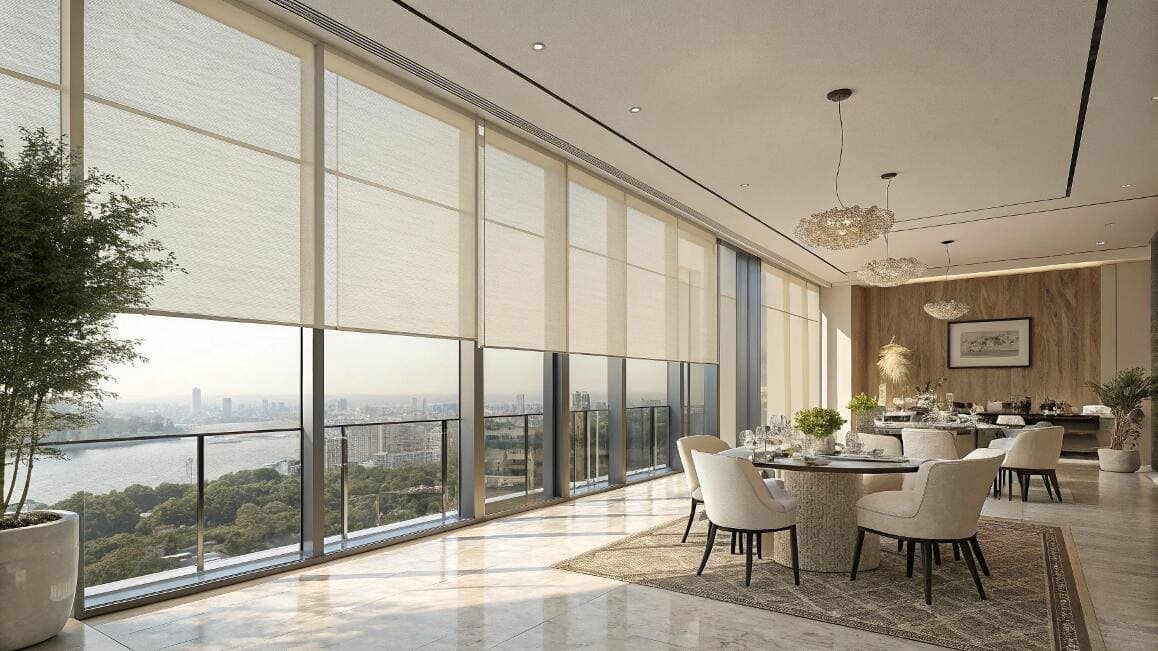
This is one of the most common issues with roller blinds, especially when a total blackout solution is required. Standard roller blinds, by design, will always have a small gap between the fabric and the window frame. The fabric has to be cut slightly narrower than the tube and hardware. So, what are the professional solutions?
| Solution | Best For | How It Works |
|---|---|---|
| Side Channels | Total blackout (home theaters, bedrooms) | Aluminum or PVC strips are fitted to the sides of the window frame, creating a track for the fabric to sit in. |
| Outside Mount | Reducing the "halo" effect | Fitting the blind on the wall above and wider than the window opening. The fabric overlaps the frame, blocking more light. |
| Blackout Strips | A simple DIY fix | Adhesive-backed foam or plastic strips that you can stick to the window frame to help close the gap. |
For my projects that demand complete darkness, I always specify a full cassette system with integrated side channels. It’s a purpose-built solution that guarantees no light leakage and delivers a much more polished, professional result than trying to add strips or fillers after the fact.
What Are Dual or Duo Blinds and How Are They Mounted?
Your project requires both light-filtering privacy during the day and complete blackout at night. How can you achieve this functionality in a single window without installing multiple sets of hardware?
The solution is a dual roller blind system7. This uses special dual brackets8 that hold two different roller blinds in one unit—typically a sheer or screen fabric for daytime and a blackout fabric for nighttime. You can operate each blind independently.
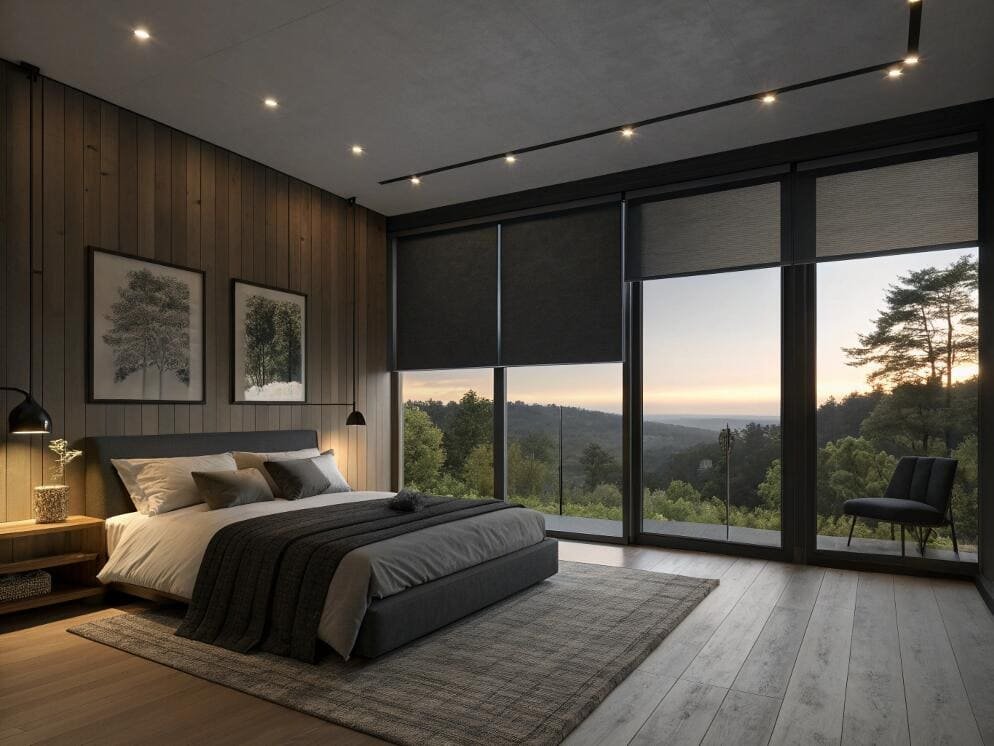
Dual roller systems, sometimes called day-and-night blinds, are one of the most versatile solutions we offer. They are essentially two blinds in one, and mounting them is surprisingly straightforward.
How Dual Brackets Work
A dual bracket is a single, larger bracket design9ed with two separate slots or mounting points. One slot is positioned in front of the other. The blackout fabric is typically mounted in the back slot (closer to the glass), and the sheer or screen fabric is mounted in the front slot. This allows both blinds to operate smoothly without interfering with each other. They can be controlled with separate chains or even with a dual motor system.
Duo Blinds vs. Dual Blinds
Be careful with the terminology.
- Dual Blinds: Two separate rolls of fabric on one bracket system.
- Duo Blinds (or Zebra Blinds10): A single loop of fabric with alternating sheer and solid stripes. As you pull the cord, the stripes overlap to switch between light-filtering and room-darkening.
Both are great options, but the dual blind system offers true blackout capability combined with a sheer view.
Explore our full range of 👉 Zebra Shades
Do All Roller Blind Fittings and Sizes Work Together?
You're trying to combine parts from different blinds or cut down an existing blind. Are the fittings universal, or are you going to run into compatibility issues?
No, roller blind fittings are not universal. The size of the tube, the type of control mechanism, and the bracket design9 vary significantly between manufacturers and even between different product lines. It's always best to use the hardware that was designed for your specific blind.
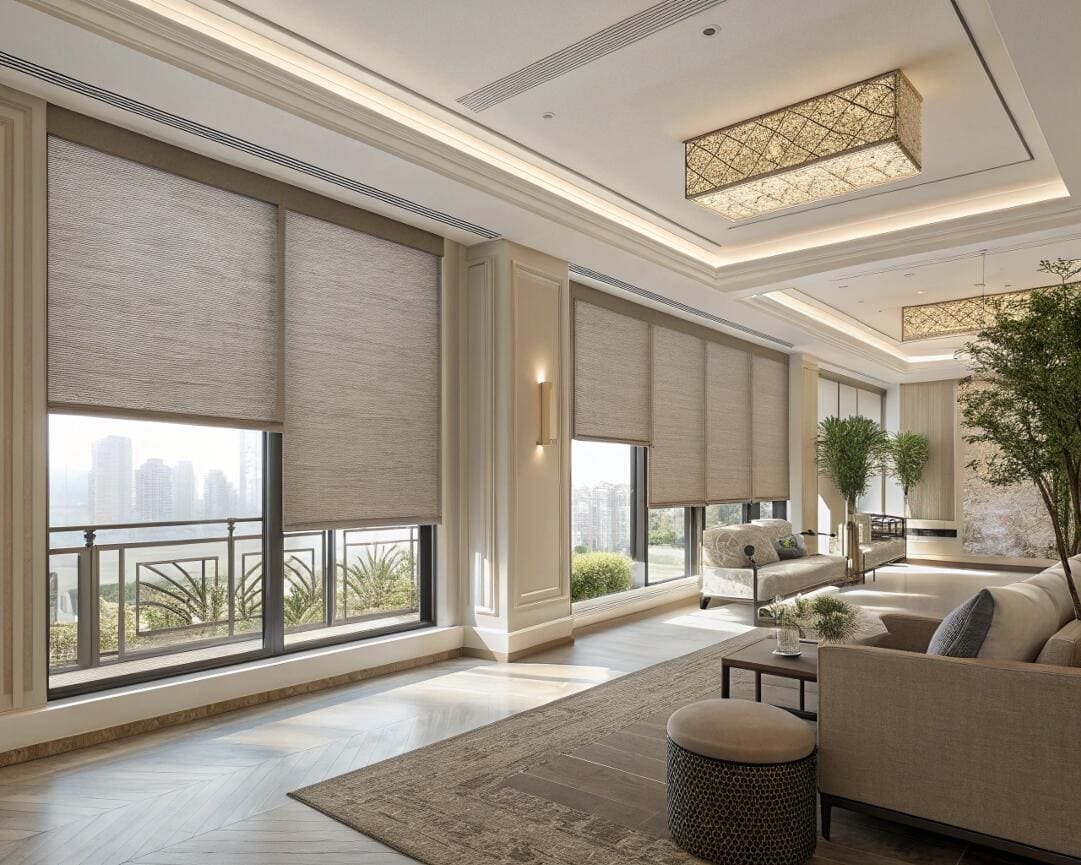
This is a critical point that can save a lot of headaches on-site. Trying to mix and match parts is a recipe for a failed installation.
Cutting a Blind That Is Too Wide
While you can technically cut down the tube and fabric of some cheaper, off-the-shelf blinds, I strongly advise against it for professional projects.
- The Cut: It is very difficult to get a perfectly straight, factory-quality cut on the fabric without the right equipment. A crooked cut is immediately obvious.
- The Tube: You need a fine-toothed hacksaw to cut the aluminum tube, and it's easy to crush or deform it.
- Fraying: Cutting the fabric will break the factory seal on the edge, which can lead to fraying over time.
For a high-quality result, always order custom, made-to-measure blinds. The cost difference is often minimal when you factor in the labor and risk of a DIY attempt, and the final fit and finish will be perfect. This is the difference between a temporary fix and a permanent, professional installation11.
Conclusion
For the best result, avoid DIY joining and instead choose custom-made wide blind4s or integrated dual systems. This ensures a perfect fit, no light gaps, and a professional finish every time.
Partner with VelaBlinds for Your Next Project
Smart window treatments shouldn't be complicated. After working with 500+ distributors and contractors worldwide, I've streamlined the process to get you quality products, competitive pricing, and reliable support - every time.
Why project professionals choose VelaBlinds:
- ✅ Fast, Accurate Quotes - Detailed specs and pricing within 24 hours
- ✅ Transparent Pricing - No hidden fees, volume discounts clearly outlined
- ✅ Quality Assurance - Direct partnerships with certified OEM manufacturers
- ✅ Project Support - Dedicated account manager from quote to delivery
Start your next project:
📧 Quick Quote: Send your requirements to info@velablinds.com
📱 Direct Contact: WhatsApp +86 137 2012 8317
🌐 Browse Solutions: https://velablinds.com/
📁 Product Resources: Access spec sheets, catalogs & project files
Paul Chen, Founder
"I built VelaBlinds to solve the real challenges I faced as a project buyer - long lead times, unclear specs, and unreliable suppliers. Let's discuss how we can power your projects with smarter blinds."
Serving distributors and contractors across North America, Europe, and Australia since 2018.
-
Learn about the advantages of roller blinds for light control and aesthetics. ↩
-
Explore how linking brackets can help you achieve a seamless look for wide windows. ↩
-
Learn techniques to create a seamless look with roller blinds for your windows. ↩
-
Discover the benefits of custom-made blinds for a perfect fit and professional finish. ↩ ↩
-
Explore the convenience and modern features of motorized roller blinds. ↩
-
Understand how light-blocking side channels can eliminate light leakage effectively. ↩
-
Find out how dual roller systems provide versatile light control for any space. ↩
-
Discover how dual brackets can enhance functionality in your window treatments. ↩
-
Understand the importance of bracket design in achieving a professional installation. ↩ ↩
-
Learn about Zebra Blinds and their unique functionality for light control. ↩
-
Discover why professional installation is crucial for achieving the best results. ↩



